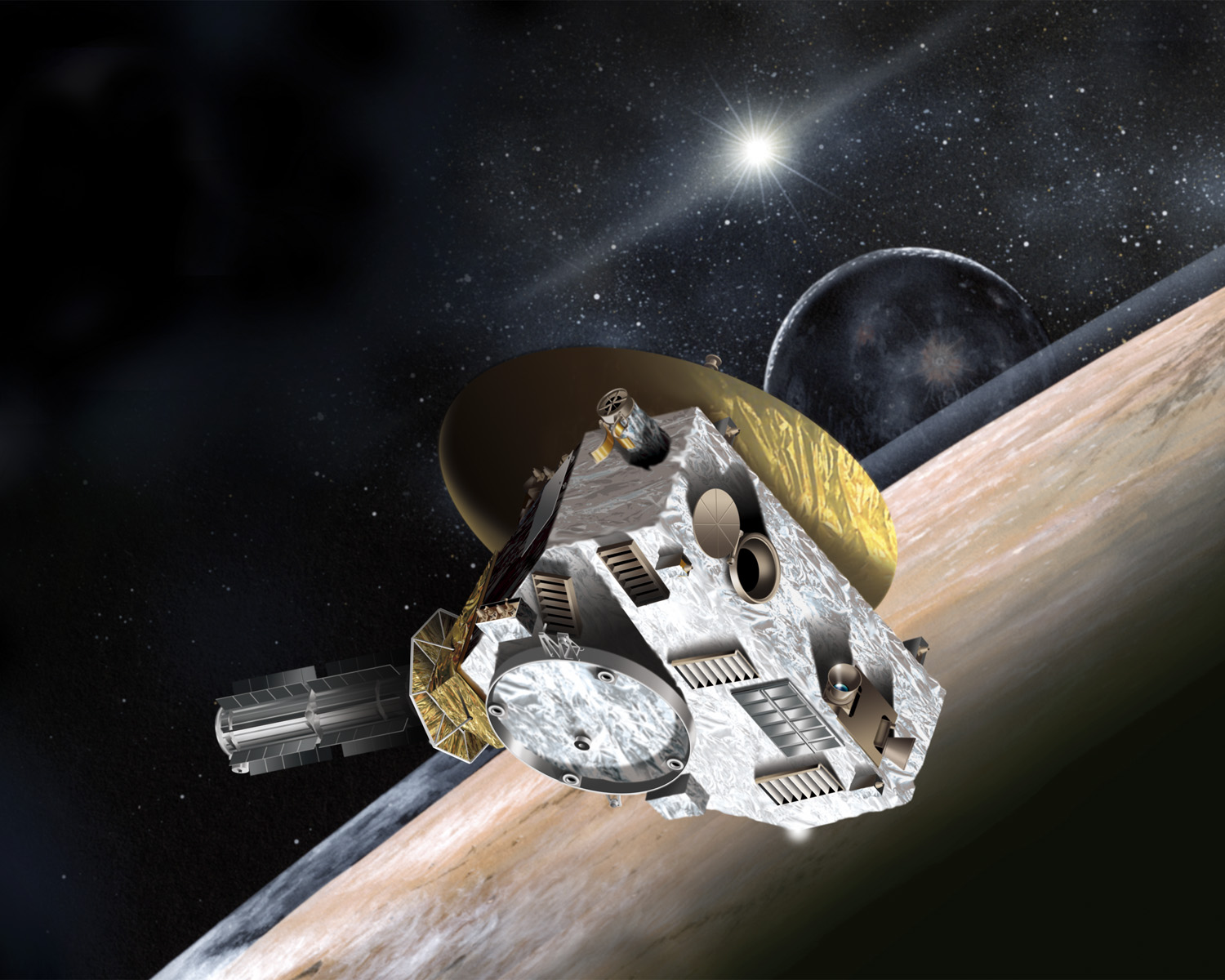How did the Kuiper Belt form? NASA New Horizons Mission
When the solar system formed, much of the gas,dust and rocks pulled together to form the sun and planets. The planets then swept most of the remaining debris into the sun or out of the solar system. But bodies farther out remained safe from gravitational tugs of planets like Jupiter, and so they managed to stay safe as they slowly orbited the sun. The Kuiper Belt(KB) and its compatriot, the more distant and spherical Oort cloud, contain the leftover remnants from the beginning of the solar system and can provide valuable insights into its birth.
NASA's new horizons mission was to visit the Pluto system which was launched July 14th. The mission is to fly by Pluto and Charon and get images and data back to earth. And also to receive more data on Pluto and Charon as well. The remote KBO was one of two identified as potential destinations and the one recommended to NASA by the New Horizons team. Although NASA has selected 2014 MU69 as the target, as part of its normal review process the agency will conduct a detailed assessment before officially approving the mission extension to conduct additional science.
"Even as the New Horizon's spacecraft speeds away from Pluto out into the KB, and the data from the exciting encounter with this new world is being streamed back to earth, we are looking outward to the next destination for this intrepid explorer." said John Grunsfield.
New horizons is said to do a series of four maneuvers in late October and early November to set its course toward 2014 MU69 Nicknamed PT1 for potentail target 1. and experts say they will reach that point on January 1 2019! any delays from that date will cost fuel and add some risk to the mission.
The New Horizons Space Craft

"Even as the New Horizon's spacecraft speeds away from Pluto out into the KB, and the data from the exciting encounter with this new world is being streamed back to earth, we are looking outward to the next destination for this intrepid explorer." said John Grunsfield.
New horizons is said to do a series of four maneuvers in late October and early November to set its course toward 2014 MU69 Nicknamed PT1 for potentail target 1. and experts say they will reach that point on January 1 2019! any delays from that date will cost fuel and add some risk to the mission.
The New Horizons Space Craft

New Horizons Space Craft Citation
There is a lot of equipment and gadgets that are on the New Horizons spacecraft. These equipment on the spacecraft make it possible for the New Horizons team to accomplish their mission. These instruments on the space craft are mostly identified by names of people.
Starting with...
"Alice" is an ultraviolet imaging spectrometer used primarily to analyze the composition of Pluto's atmosphere.
"Lorri" is an high-resolution optical telescope and camera that will start monitoring Pluto's regularly about 200 days out!!
"Ralph" A combination optical/infrared instrument that will be used to provide color maps of the surfaces of Pluto and Charon, plus compositional and thermal information on the surfaces.
"Pepssi" Particle detection instrument used to detect molecules and atoms escaping from Pluto's atmosphere.
"Swap" Particle instrument used to measure the properties of the solar wind around Pluto.
"Rex" Radio experiment to study Pluto's atmosphere by observing the bending of radio waves beamed up to the craft by giant antennas on earth.
"Student Dust Counter" Devised by undergrads at University of Colorado, will count dust particle impacts from earth all the way into the Kuiper Belt.
Layout and time line of New Horizons Mission


So starting to the left of the timeline January 19, 2006 New Horizons spacecraft launches from Cape Canaveral in Florida. The spacecraft is shown in the picture, appearance may be related to a satellite.
Moving from left to right in February 28, 2007 the spacecraft flies by Jupiter for a gravity assist that saves three years of flight time. The team will conduct significant science in preparation for Pluto's encounter.
2007-2014 For the most of the 8 year cruise from Jupiter to Pluto, The craft spins slowly in a state of "hibernation" signalling once a week to assure its "sleeping peacefully". But for about 50 days each year it is awakened to conduct an intensive set of spacecraft and instrument checks as well as navigation measurements to verify the spacecraft is on course.
Moving from left to right in February 28, 2007 the spacecraft flies by Jupiter for a gravity assist that saves three years of flight time. The team will conduct significant science in preparation for Pluto's encounter.
2007-2014 For the most of the 8 year cruise from Jupiter to Pluto, The craft spins slowly in a state of "hibernation" signalling once a week to assure its "sleeping peacefully". But for about 50 days each year it is awakened to conduct an intensive set of spacecraft and instrument checks as well as navigation measurements to verify the spacecraft is on course.
December 2014 The spacecraft is awakened from its final planned hibernation. Intensive preparations
for the Pluto encounter continue.
July 14, 2015 New Horizons makes its closest approach to Pluto.
2017-2020 With NASA's approval New Horizons can explore suitable, recently discovered Kuiper Belt Objects beyond Pluto. So it is shown that their will be more discoveries regarding Kuiper Belt Objects.
Citations
http://www.space.com/16144-kuiper-belt-objects.html
http://pluto.jhuapl.edu/News-Center/News-Article.php?page=20150828
http://pluto.jhuapl.edu/News-Center/News-Article.php?page=20150828
No comments:
Post a Comment